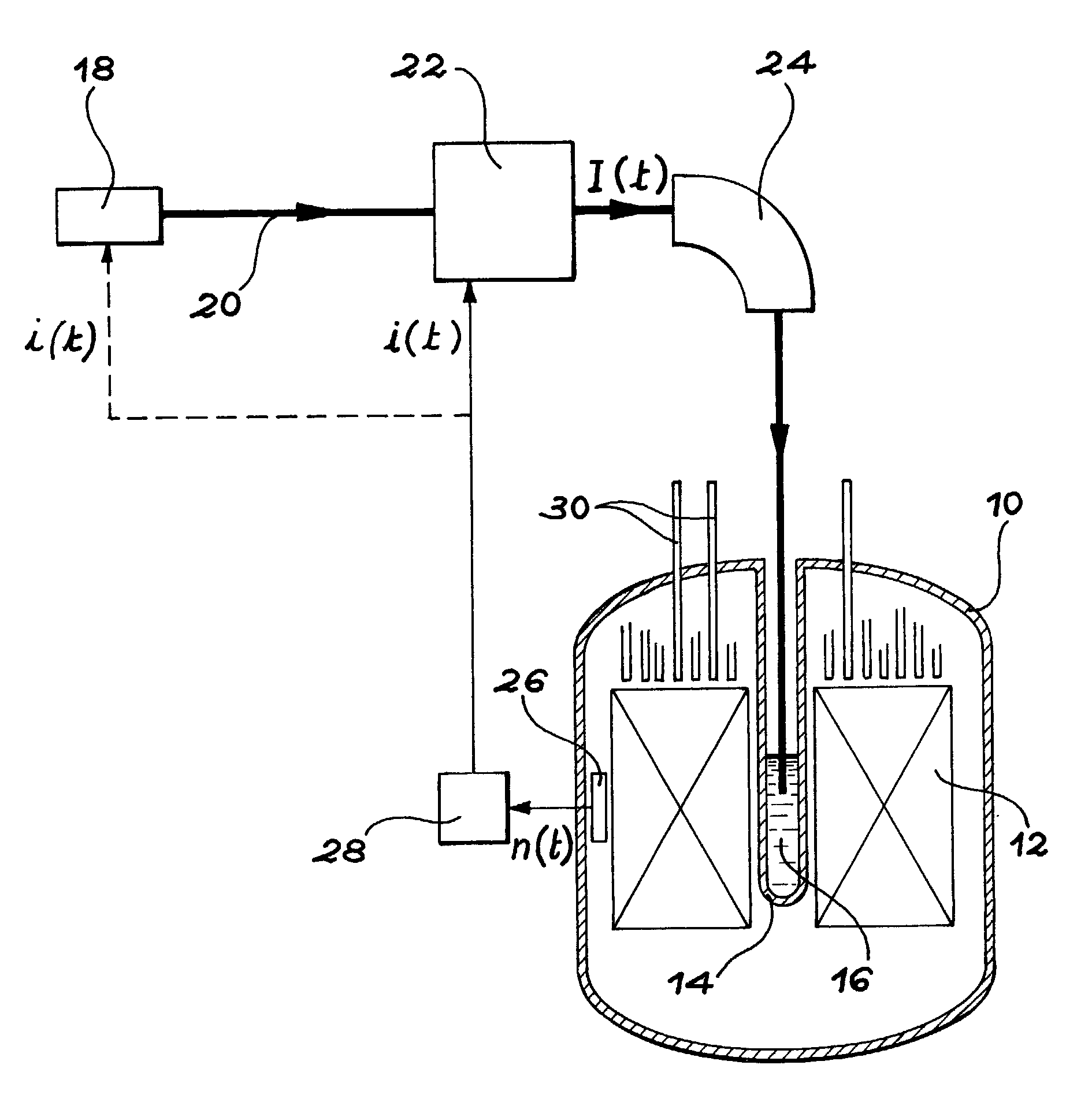Method for incinerating transuranian chemical elements and nuclear reactor using same
a technology of transuranian chemical elements and nuclear reactors, applied in nuclear reactors, climate sustainability, nuclear energy generation, etc., can solve the problems of long-lived nuclear waste, major environmental problems, and the quantity of waste introduced into each reactor would then have to be limited
- Summary
- Abstract
- Description
- Claims
- Application Information
AI Technical Summary
Benefits of technology
Problems solved by technology
Method used
Image
Examples
Embodiment Construction
[0021] A precise aim of the invention is an incineration process that constitutes an intermediate solution between that of the dedicated critical reactor and that of the sub-critical hybrid system, wherein this solution makes it possible to resolve the safety problems linked to the drop in the fraction .beta. of delayed neutrons in dedicated critical reactors and the problems posed, in particular, by the size of the proton source and proton accelerator in sub-critical hybrid reactors.
[0022] According to the invention, this result is obtained by an incineration process for transuranic chemical elements, in which said elements are placed in the sub-critical core of a nuclear reactor and spallation neutrons, emanating from an external source, are injected into the core, characterised in that:
[0023] a reactor is used in which the core operates at a low level of sub-criticality, substantially equal to the difference between a desired fraction .beta..sub.t of delayed neutrons in the core ...
PUM
 Login to View More
Login to View More Abstract
Description
Claims
Application Information
 Login to View More
Login to View More - R&D
- Intellectual Property
- Life Sciences
- Materials
- Tech Scout
- Unparalleled Data Quality
- Higher Quality Content
- 60% Fewer Hallucinations
Browse by: Latest US Patents, China's latest patents, Technical Efficacy Thesaurus, Application Domain, Technology Topic, Popular Technical Reports.
© 2025 PatSnap. All rights reserved.Legal|Privacy policy|Modern Slavery Act Transparency Statement|Sitemap|About US| Contact US: help@patsnap.com



